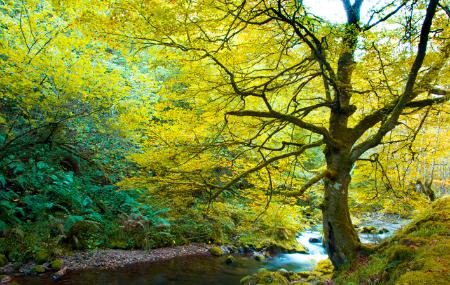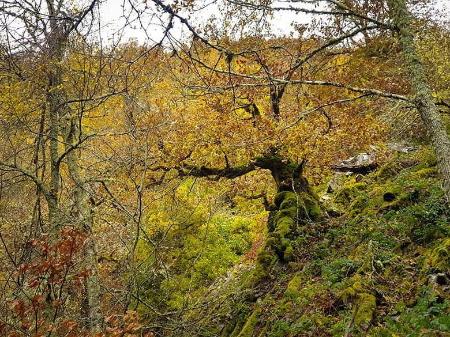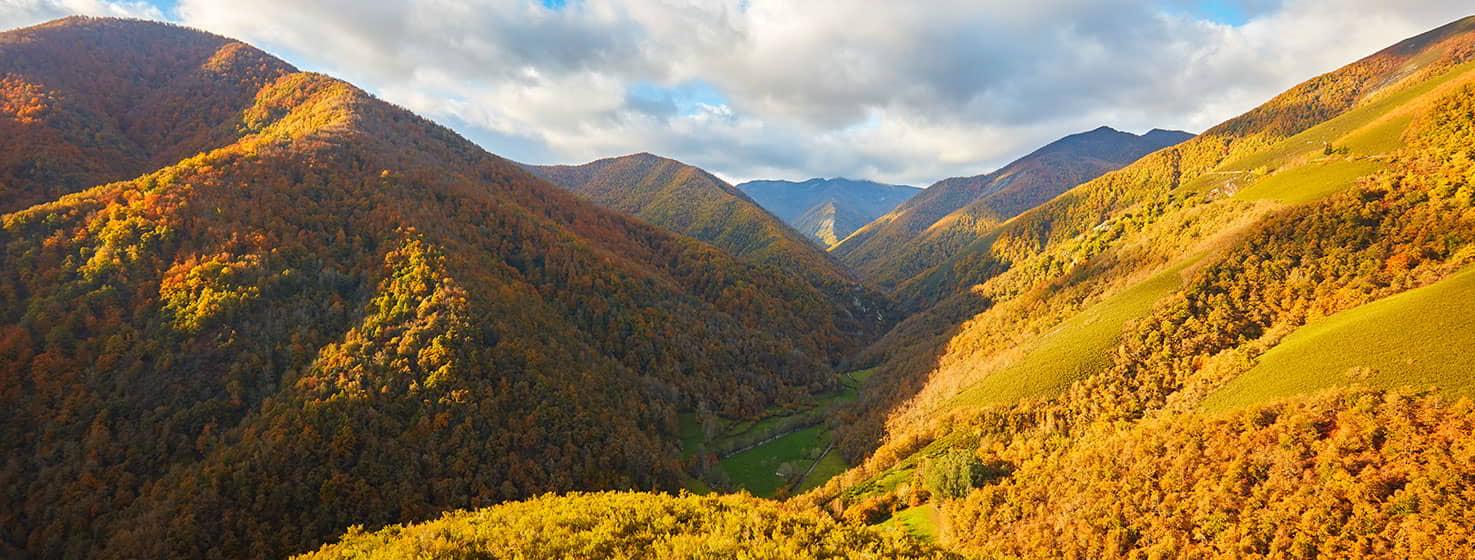
Guide to visit Muniellos
- Title Cangas del Narcea e ibias Western Asturias
- Extension Extension: 55 km 2
- Open to the public Open to the public: All year round.
- Maximum elevation Maximum elevation: Pico la Candanosa at 1676 m.
Every 15 December, the annual inscriptions open to visit the Muniellos Forest, one of the best natural heritages of Asturias.
Only 20 privileged people a day can access the largest oak forest in Spain -and one of the best in Europe-, listed as a Biosphere Reserve since 2000.
All you need to know to apply for access to the Muniellos Integral Nature Reserve
To visit this little piece of paradise in the Fuentes del Narcea, Degaña and Ibias Nature Reserve, there are several things to bear in mind. Given the importance of the natural space where brown bears, wolves, roe deer and even capercaillies live, you must have an official authorisation. The online application is free(opens in a new tab) and quite simple, however, it is important that you are clear about a few points:
- When you apply for access, you will be sent a pre-authorisation which you have to confirm between 15 and 23 days before the chosen date.
- Only one application per person, couple or group is processed.
- If you have a confirmed reservation and do not show up before 10:00 AM on the chosen day, you will automatically be blacklisted and will not be able to apply for access again during the season.
- On the day of your visit you must carry the printed authorisation and show your ID to the guard.
- Even if you have a confirmed authorisation, if the weather conditions are extreme, access to the routes may be restricted or visits may be cancelled.
- You cannot bring your pets.
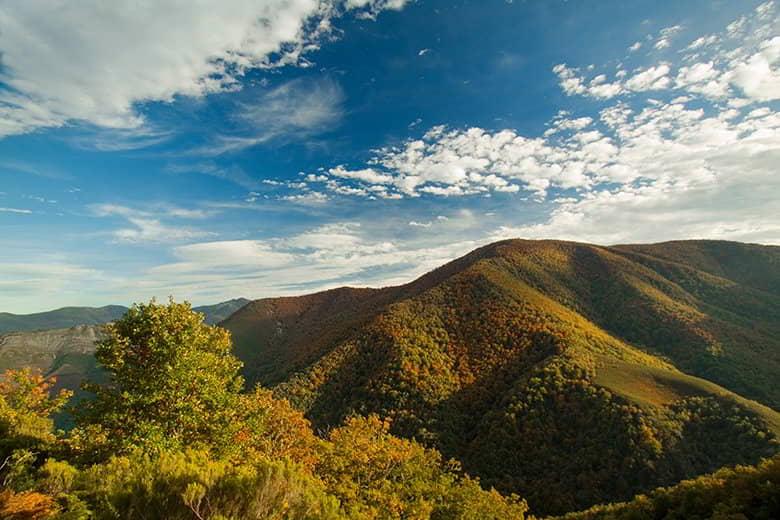
No more places available for the day you want to visit Muniellos?
Keep your fingers crossed! If any of the people who applied online does not show up - or arrives late -, their place will be available until the capacity of 20 visitors per day is reached. To find out if there are still places available, call the Muniellos ranger at 10:00 am (phone 661 931 580). Try to be in the area and be prepared (mountain clothes, walking sticks, rucksack with water and snacks, etc.).
If you haven't made it, we propose a perfect alternative that you will be able to see and enjoy later.
There are 3 official routes in Muniellos, choose the one that best suits your circumstances!
The Muniellos routes start and finish in the same place, the Muniellos Visitor Reception Centre, in Las Tablizas. In this area there is no good coverage. It is therefore advisable to download the map of Muniellos to your mobile phone and, if possible, to carry the track of the route in your navigator. If you are not an experienced hiker, or if you want to enjoy a more professional experience, you can hire an accredited expert guide. You will find the contact method in the authorisation.
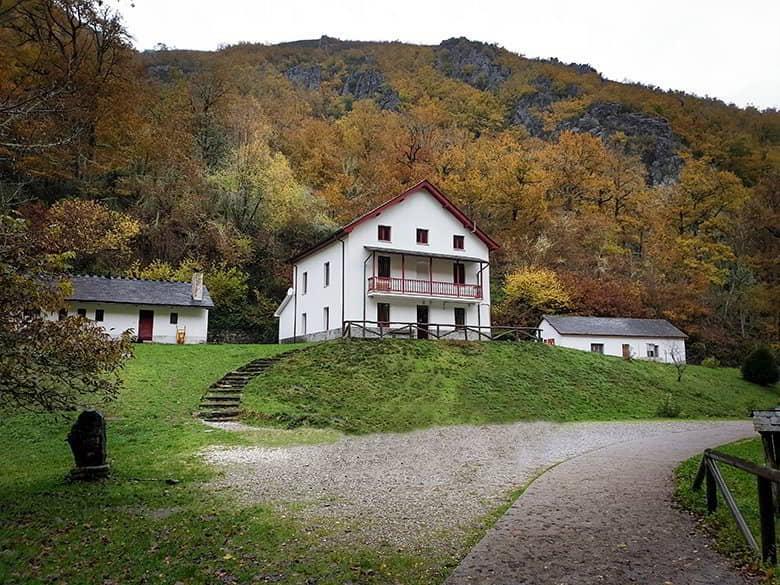
A simple walk along the adapted Muniellos trail
The 1.2-kilometre wooden walkway (round trip) is the perfect option for people with mobility problems or very young children. It is an adapted path that enters the forest following the course of the Candanosa stream. Incredible as it may seem, 600 metres are enough to feel like you are in the heart of the oak forest.
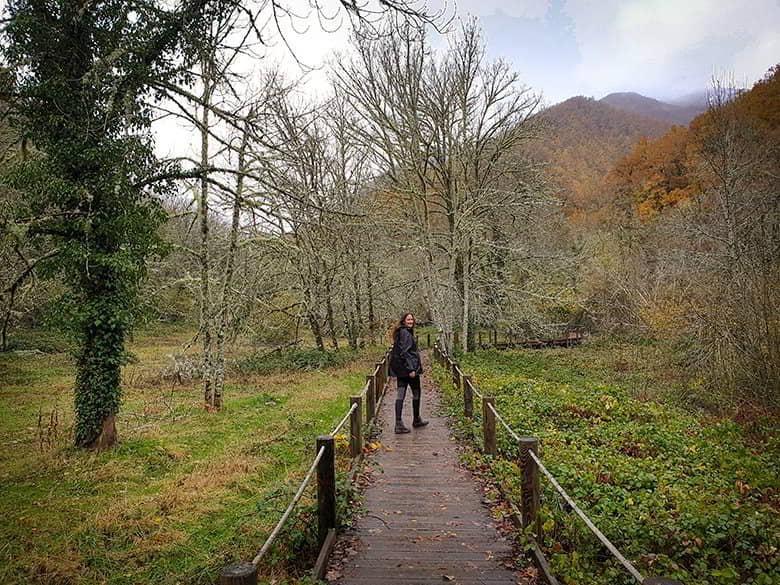
River Route (at the end you can add the ascent to the glacial lagoons)
If you are in good shape and used to walking in the mountains, this route is for you. It starts by walking along the same wooden walkway as the adapted path, and continues into the native forest of oak, yew, maple, hazel, etc. The variety of flora in Muniellos is very wide, and there is even an endemic species, the Muniellos buttercup. The photos that accompany this article show the beautiful palette of colours that the deciduous forest gives us in autumn.
This route becomes slightly more difficult from kilometre 4 onwards, when the ground is no longer earth but loose slate and quartzite stones.
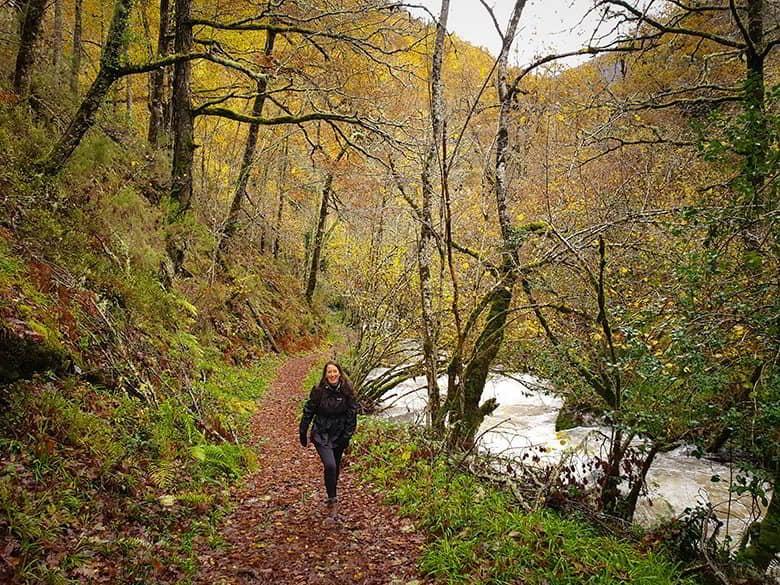
After reaching Las Tres Cruces, if you wish, you can take a detour to the Muniellos lagoons: La Isla, La Fonda, Laguna Grande and La Peña, all of them of glacial origin. This 1.5-kilometre-long stretch, which climbs continuously between birch trees, is usually the first to be closed when there is snow. The Isla lagoon appears after walking 1 kilometre. La Fonda can be found by crossing the rocky outcrop above the Isla. Next comes the Laguna Grande (which requires a difficult pass), and the last one, La Peña, is only visible during the rainy season.

Knowing this, it is up to you to go up to the lagoons or turn back at Las Tres Cruces. In either case, to return to Las Tablizas, you will have to retrace your steps.
The Long Route (includes all of the above)
Choose this option if you are used to high mountain routes. There are 20 kilometres, complicated passes and steep slopes. If you visit the Muniellos Biosphere Reserve between December and April, it is very likely that there will be snow at high altitudes. For safety reasons this route is closed until the weather improves.

The circular route starts on a path to the right of the Muniellos Visitor Reception Centre, which goes up the valley of La Degollada. A demanding ascent, where there are some sections secured with ropes, will take you to the Fonculebrera Valley, crossing a beautiful beech forest. Continuing the ascent, but more comfortably, you will reach Las Tres Cruces. There you can choose to climb up to the lagoons or start descending. In either case, the return is via the river route that ends at the adapted path.
Remember to inform the ranger of your arrival at the end of either route.
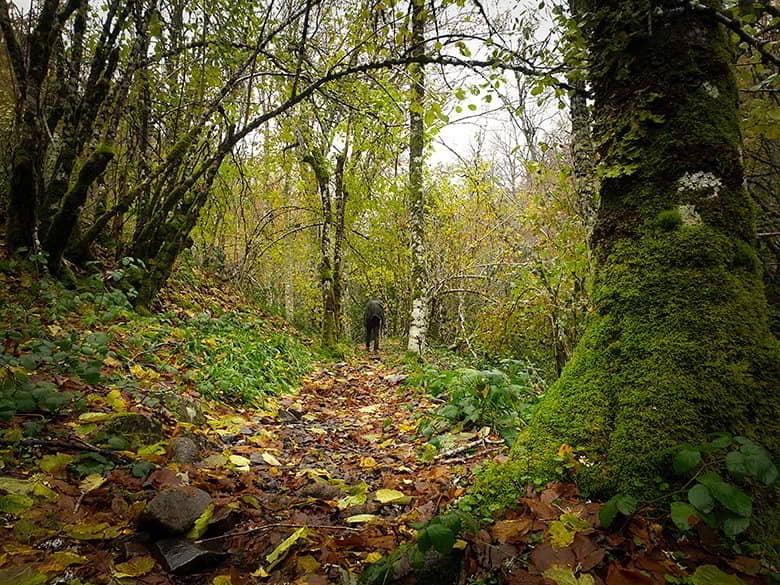
The perfect alternative to Muniellos. A plan B as good as plan A
The Muniellos Biosphere Reserve includes the Munieḷḷos, La Vilieḷḷa and Valdebois mountains, but there are also routes bordering the Reserve. One of them starts in the village of Mual.
The 10-kilometre, low-difficulty circular route, signposted as a PR-AS 132 short-distance footpath, crosses a forest twinned with Muniellos, where the same species live. Do not hesitate to do this route if you have not obtained authorisation to visit the Muniellos Integral Nature Reserve.
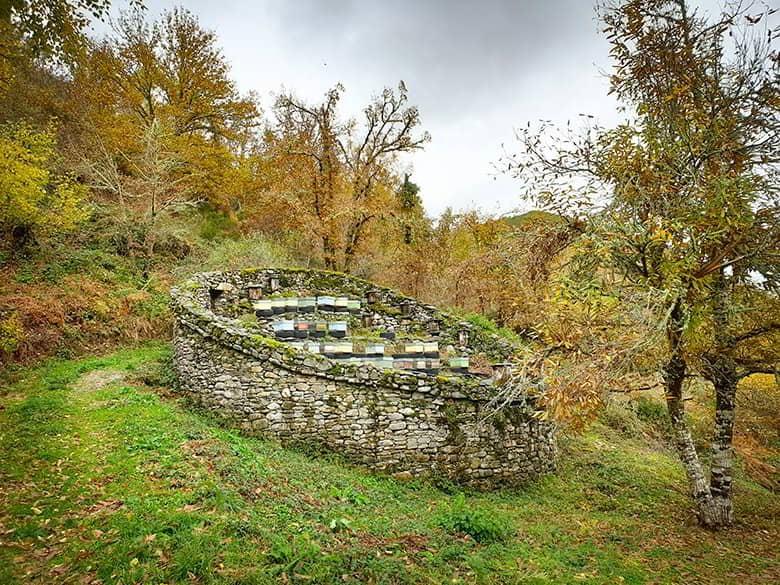
Interpretation Centre and Viewpoint of La Candanosa
The Muniellos Interpretation Centre is located 2 kilometres from Mual, in Oubachu. It is a building of peculiar architecture that has several exhibitions, tourist information and a cafeteria. In the lower part you will find a rest area, open every day of the week, 24 hours a day, and under cover.
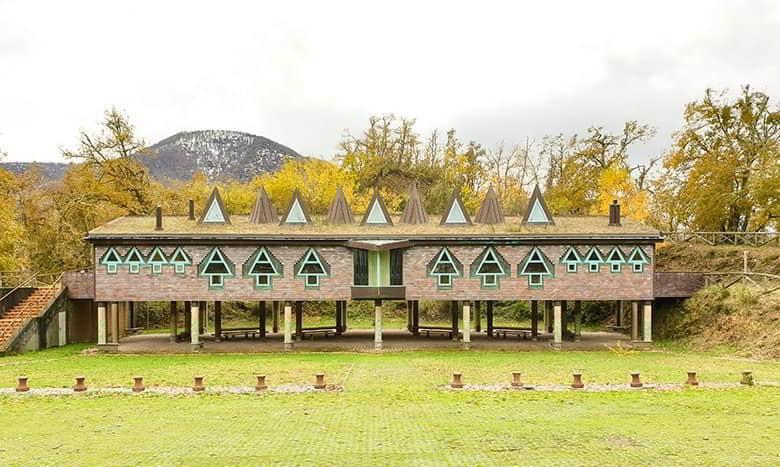
Bordering the building, you reach the Candanosa viewpoint. From here you can enjoy the best views of the Muniellos valley.
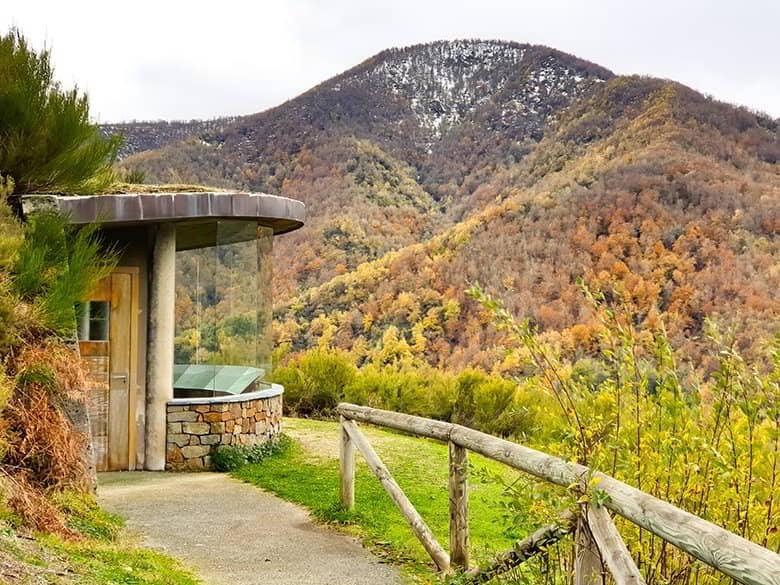
Latest tips
In the Muniellos Biosphere Reserve there is no accommodation or restaurants, you will have to go to one of the nearby villages or to Cangas del Narcea.
You won't find toilets either, you can go for the last time to the Muniellos Visitor Reception Centre. Remember not to leave rubbish in the forest.
If you visit the Muniellos Reserve during the rainy season, you should be aware that the difficulty of the routes increases considerably.
For your safety, follow the advice of the ranger and never leave the paths.
No pets are allowed.
Take advantage of the fact that you are in an area inhabited by brown bears and wolves to go sightseeing. Hire an experienced guide to make your experience safe and satisfactory.
Images
Info
It includes the Munieḷḷos and La Vilieḷḷḷa mountains (Cangas del Narcea) and the Valdebois mountain (Ibias). The Muniellos Forest, the largest oak forest in Spain and one of the best preserved in Europe, is home to a true virgin nature that is reborn every season with surprising examples of its adaptation to the environment. Always changing, it is a clear example of the Asturian paradise at all times of the year. Oaks of different species and up to six metres in diameter, beech and birch trees are dotted with the continuous presence of holly and yew trees, the perennial kings of the Muniellos autumn.
This fantastic forest, full of legends and Asturian mythology, sits on a Palaeozoic substratum some 500 million years old; here you can see ancient glacial cirques and lleronas, crumbled quartzite cliffs. The glacial origin of Muniellos is attested by the famous lagoons of the Pico de la Candanosa, four steps of water, of enigmatic beauty, which are hidden among valleys, paths and peaks. The ascent to these lakes: La Peña, Grande, Fonda and La Isla is one of the most interesting routes for hiking enthusiasts.
The river Muniellos or Tablizas, a tributary of the Narcea, flows through the forest, collecting the waters of the numerous streams that flow torrentially along its sides. The climate is typically mountainous, with a high rainfall of around 1,800 litres per square metre, and a temperature of 10ºC in the mid-mountains and below 6ºC in the summit region. Snow is frequent during the cold season, with snow remaining for most of the winter in the highest areas.
Plant life
Another of the fascinating secrets of Muniellos is its great variety of fungi and mushrooms, most of them edible, which sow the forests with more than four hundred species. The plants take advantage of any lack of attention from the winter sun to produce their intensely coloured fruits. Almost four hundred different species, some of which form part of the catalogue of Threatened Species of the Flora of the Principality of Asturias.
Wildlife
Animal lovers have in the Muniellos Forest an important reference point for Asturian fauna. Abundant, varied and elusive, they hide in the depths of the forest, fleeing from human presence. The most relevant is the Cantabrian brown bear, which finds the right conditions for its development and survival in the area. The wolf populates the mountains with stable breeding areas and the presence of family groups, feeding on other animals that inhabit the mountains, such as wild boar and roe deer. It is possible to observe the moulting of the fox's fur in autumn, when squirrels, jays and grouse change their spring diet for the abundant fruits that fill the forest: blueberries, blackberries, hazelnuts and acorns.
Map
- Muniellos Interpretation Centre (between Oubachu and Mual)
- Visitor Reception Centre of Muniellos (Las Tablizas)


